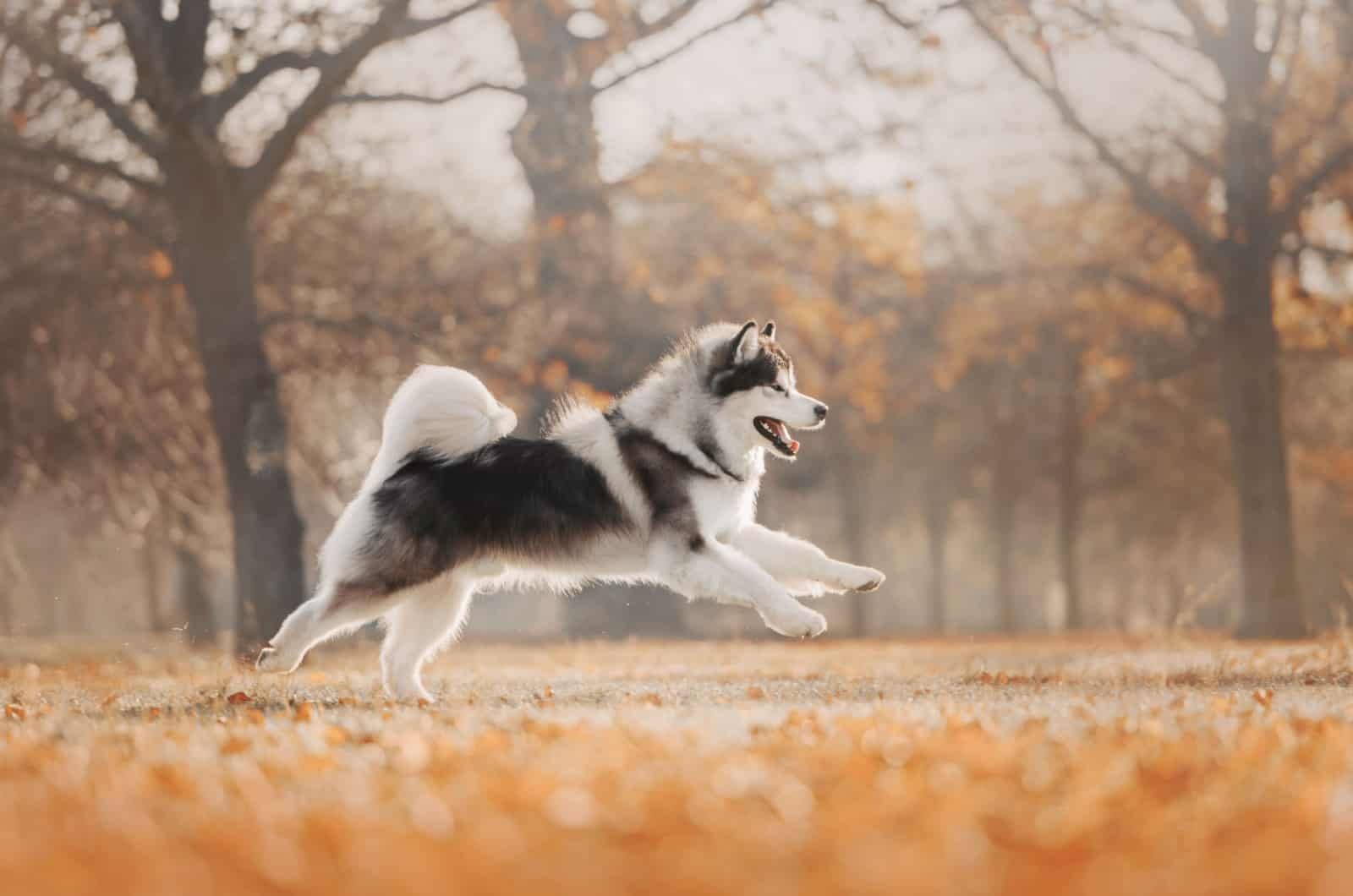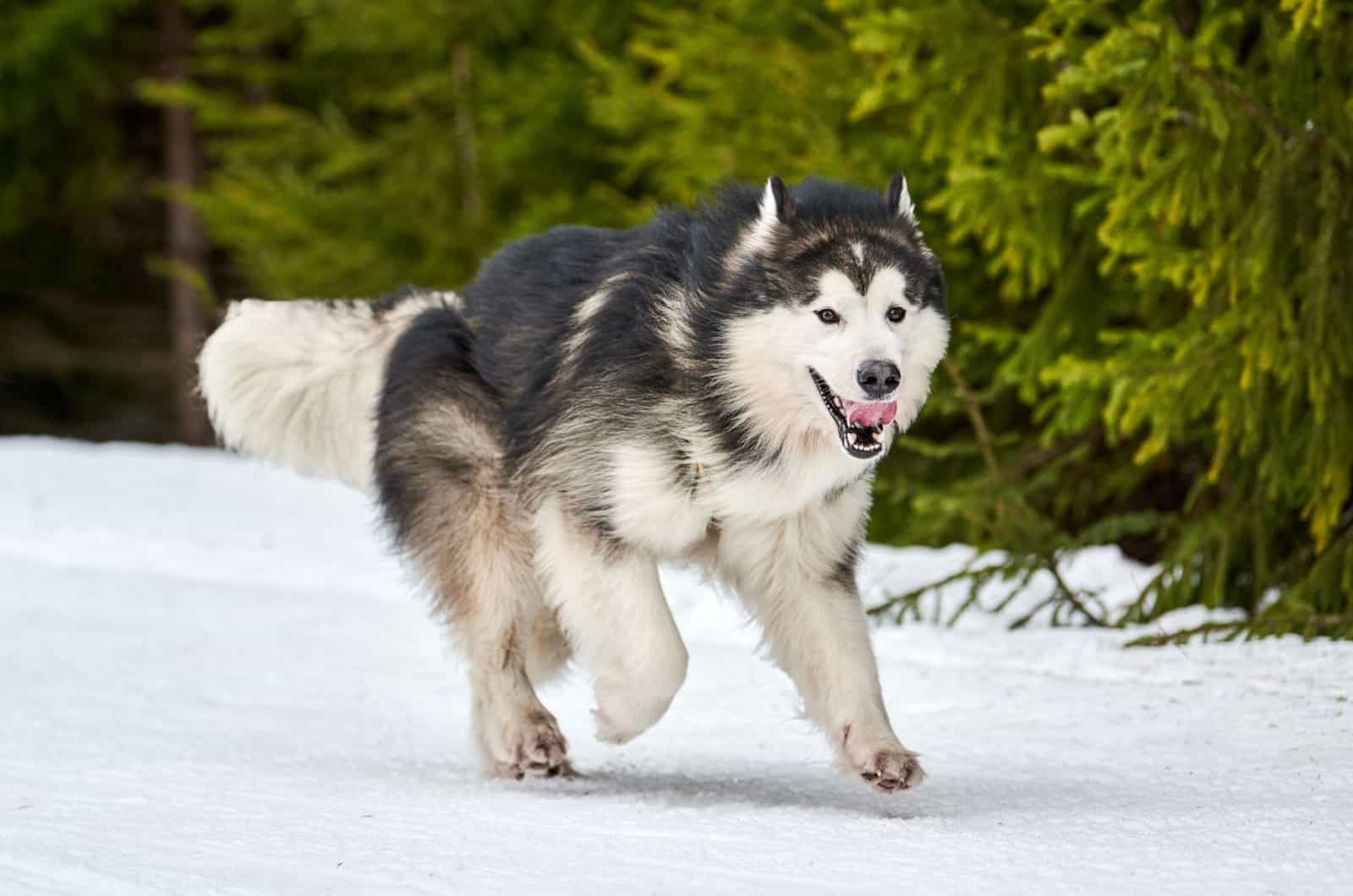The Alaskan Malamute is the epitome of a strong, loyal, hard-working dog. It has been a staple of many families in the northern parts of the planet for a long time, whether as a working dog or just a companion.
Even though most people might think they only come in shades of gray, the truth is that there are many different Alaskan Malamute colors. In fact, there are nine of them, to be precise, and we will talk about all of them individually in this article.
As their name suggests, they are most frequently found in Alaska. The name “Malamut” comes after an Inuit tribe called “Mahlemuts”. Their home was in the northwestern part of Alaska, which is an incredibly inhospitable and unforgiving terrain for people.
It was, in fact, their Malamute dogs that helped these tribes thrive despite the harsh weather conditions.
They are now mostly kept as pets, but they were originally used as sled dogs. Their large frame, incredibly strong muscles, durable bones, and a thick double coat made them perfect for pulling heavy loads, so it’s no wonder why they were so popular among people in the icy north.
They are often compared to, and sometimes even confused with, Siberian Huskies, but they are really two very distinct dog breeds. Alaskan Malamutes are much bigger, sometimes growing over 25 inches (63.5 cm) in height at the withers, with Huskies only going up to about 22 inches (55.9 cm).
But, enough about their size… let’s talk about their gorgeous coat colors!
How Many Alaskan Malamute Colors Are There?
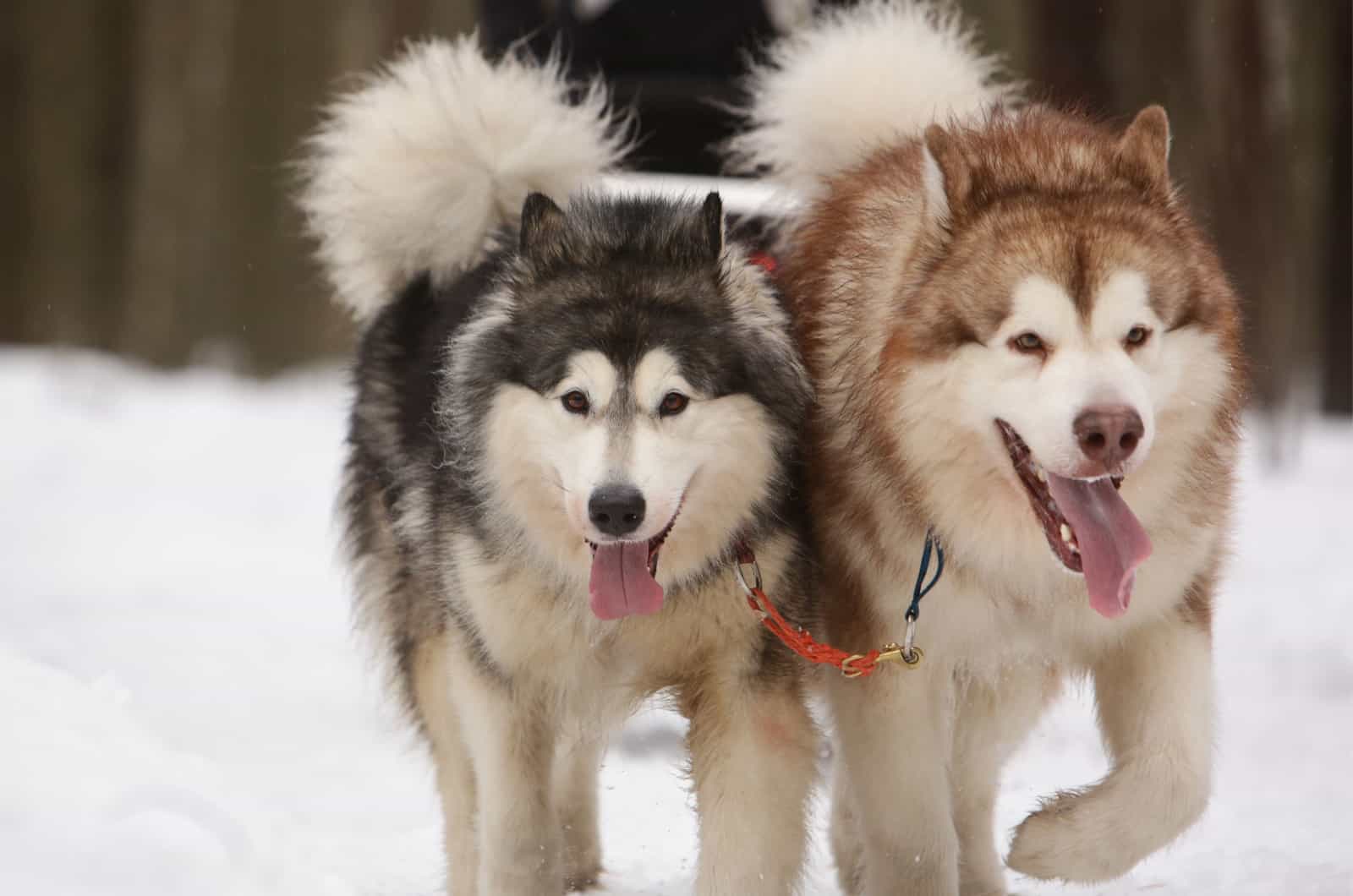
There is nearly an endless amount of different shades and color combinations that can make up a dog’s coat. In fact, we wrote a whole article about what determines the colors and what sort of patterns they can form in dogs in general.
However, when it comes to the Alaskan Malamute, there are a total of nine different distinct colors that make up their coat. There can be numerous differences in coat patterns, markings, and spots, but they can all usually be boiled down to these nine separate categories.
Ever since people have started to adapt them to living in warmer climates, this has, among other things, resulted in a wider variety of shades, moving away from the predominant gray and white mixture.
Distinguishing between these colors can be difficult, especially if you’re not closely familiar with the Alaskan Malamute breed since they can often appear similar to the untrained eye.
But, don’t worry – that’s why we’re here. In this comprehensive guide, we will lay out all the colors and patterns in a way that is easily understandable even to someone who’s never seen an Alaskan Malamute in person.
AKC Standard Coat Colors In Alaskan Malamutes
The American Kennel Club book of standards describes the Malamute’s outer coat as thick and coarse, usually short to medium in length. The undercoat is much denser, oilier, and woolier… growing to no more than a couple of inches long.
With regard to the color, Malamute coats range from light gray to dark gray, but they also come in different shades of black, sable, and red.
All combinations of these colors can appear in the undercoat, points, and trimmings, but they never appear as one solid color, except for one very special exception, but we’ll talk more about that in just a minute.
The predominant color on any Malamute’s coat is white. It most often covers the underbody, legs, and face, with occasional spots on the back or even the tail. Let us now go through each of the nine distinct color categories that Alaskan Malamutes can appear in.
White
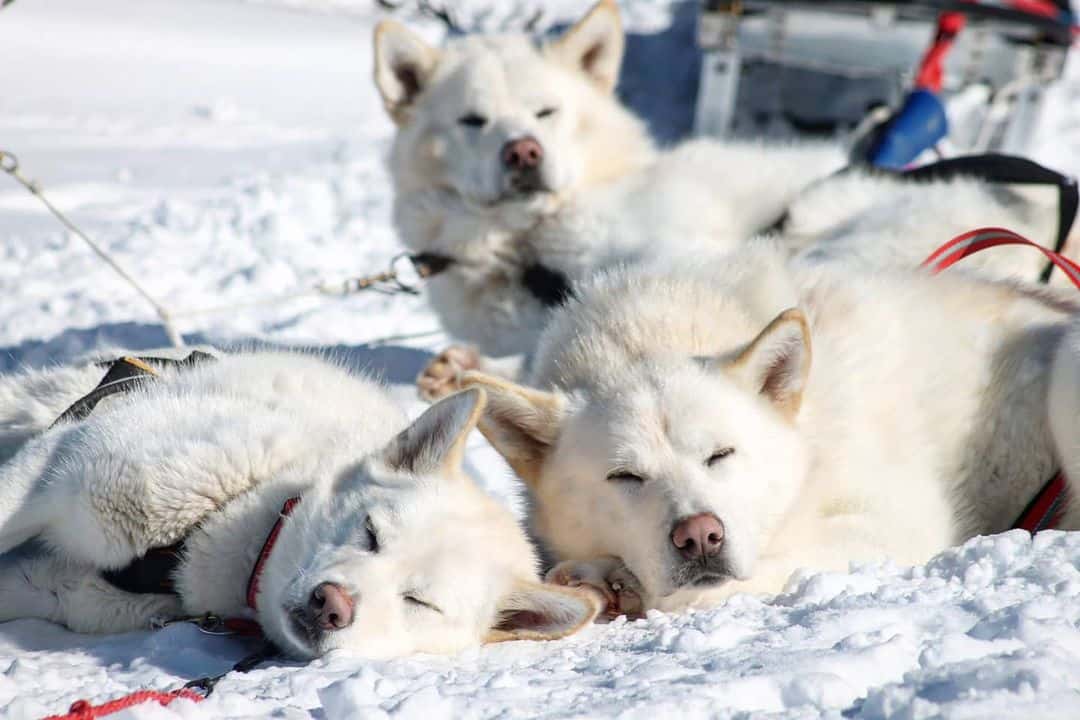
Photo from: @ukioq.soul
White is the only solid color that can appear in Alaskan Malamutes. These specimens are fairly rare, which is why white is not the first color that comes to mind when speaking of Malamutes.
There are plenty of dog breeds that frequently come in white, but these fluffy pooches very rarely do.
A stretch of white or cream covers their entire body with no exception, from when they are born all the way through their adulthood. They are so unique among Malamutes that people occasionally assume that they are a different breed altogether, but that’s not the case.
In fact, solid all-white Malamutes are considered up to the breed standard by the American Kennel Club just like any other two-color combination.
Agouti And White
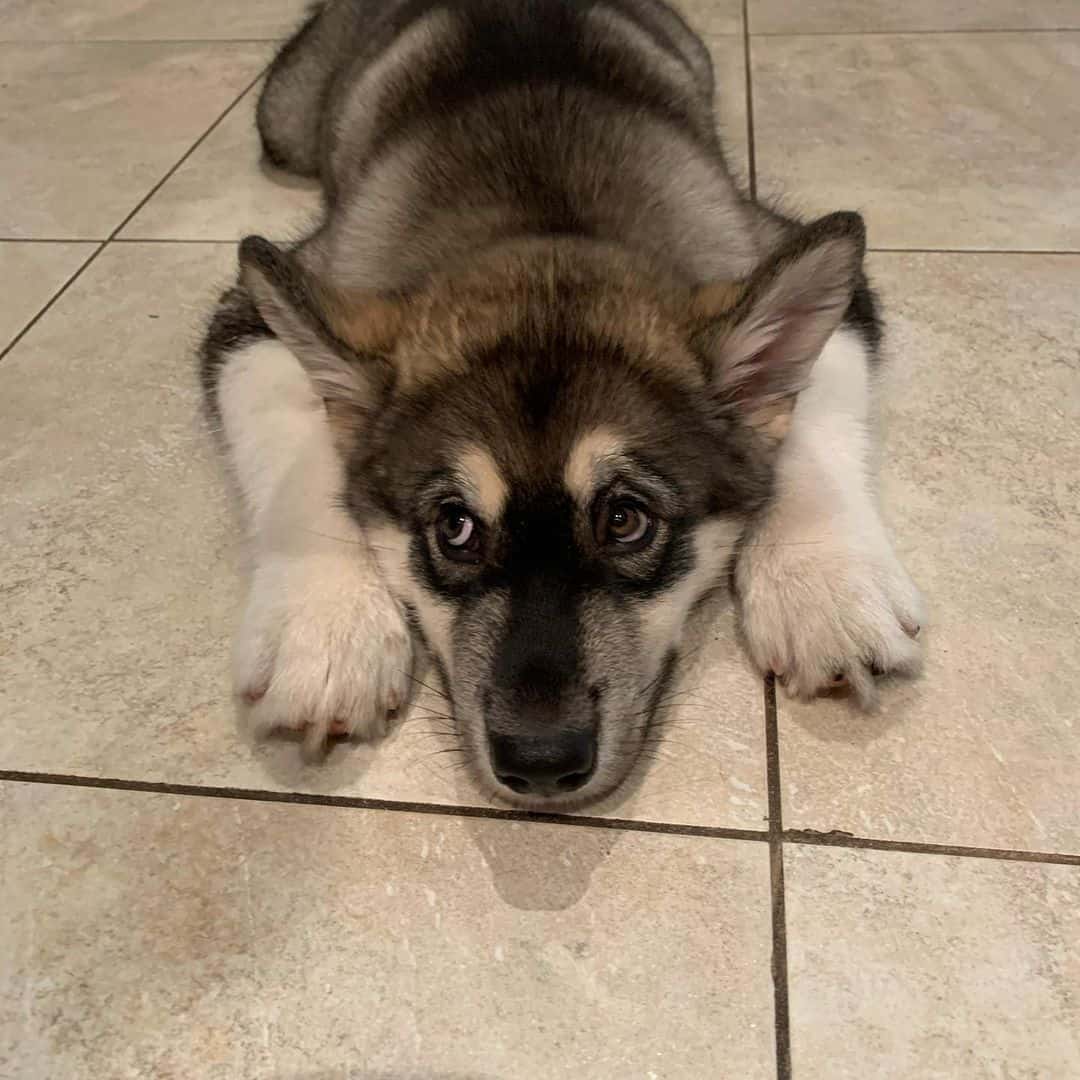
Photo from: @tallahwolfpup
The agouti-and-white coat color combination is one of the rarest when it comes to Alaskan Malamutes. The hair is described as muddy-colored, with a dark, sooty face, contrasted by white or cream-colored eyebrows.
At birth, many agouti-and-white Alaskan Malamute puppies can be confused with dark gray or black ones as the white markings are not as pronounced yet. However, as they age, white becomes more prevalent, and some of them lose the “muddy” look altogether.
In the prime of their adulthood, the agouti will be more noticeable, so they will be more distinguishable from the gray shades, but as they approach old age, the agouti will start to fade.
Agouti is a familiar coat pattern to some dog owners, but it’s not that widespread. It’s actually most commonly associated with Malamutes and Siberian Huskies, and it’s one of the things that makes these two breeds look very similar.
Black And White
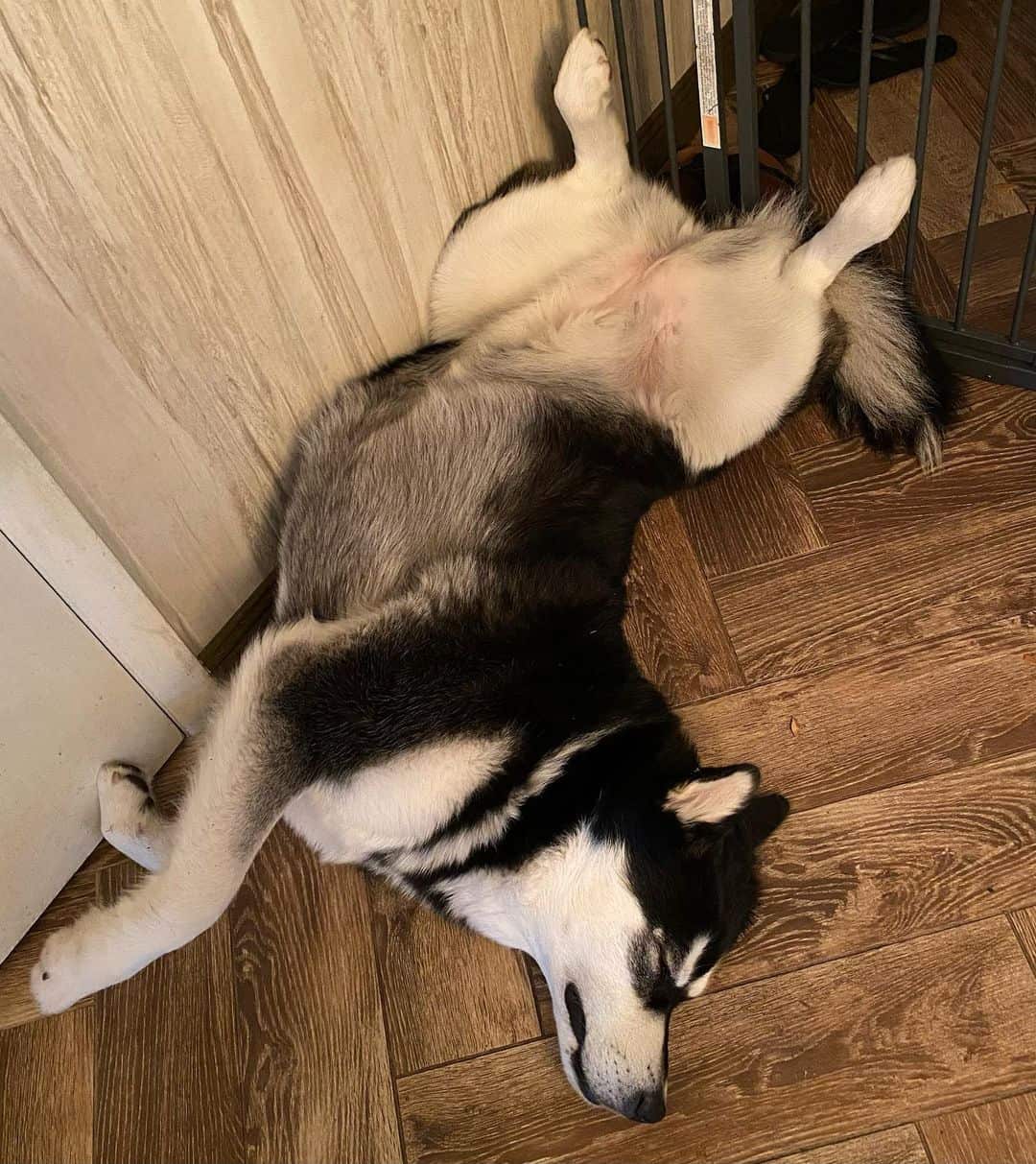
Photo from: @rajah_nala_adventures
Black and white Alaskan Malamutes are recognizable by their black guard hair and very dark undercoat. In fact, it’s exactly the undercoat that offers a clear distinction from the seal and white combo, which usually has a light undercoat, most often in cream or light gray.
When it comes to their outer coat, the distinguished black part extends across the lower part of an adult Alaskan Malamute’s body, and all the way down to its legs. It’s generally supported by black tippings on its face and neck, as well as the areas around the collar, and sometimes on its back.
During puppyhood, it has a uniquely solid-black face, with white or cream-tinted eyebrows.
Blue And White
This combination is perhaps the trickiest to discern of them all as it’s very similar to shades of gray.
To be completely honest, the “blue” in this case is actually gray that has a sort of blue-ish tint to it, particularly in certain lighting conditions. It is a very subtle difference that is hard to notice even for experts, especially in Malamute puppies, but it still counts as a separate color because it’s not exactly gray.
Another thing that is common for blue and white Alaskan Malamutes is a cute little blaze of white hair stretching from the tip of their snout, up between their eyes, and towards the top of their forehead. It almost looks like a landing strip for airplanes.
Gray And White
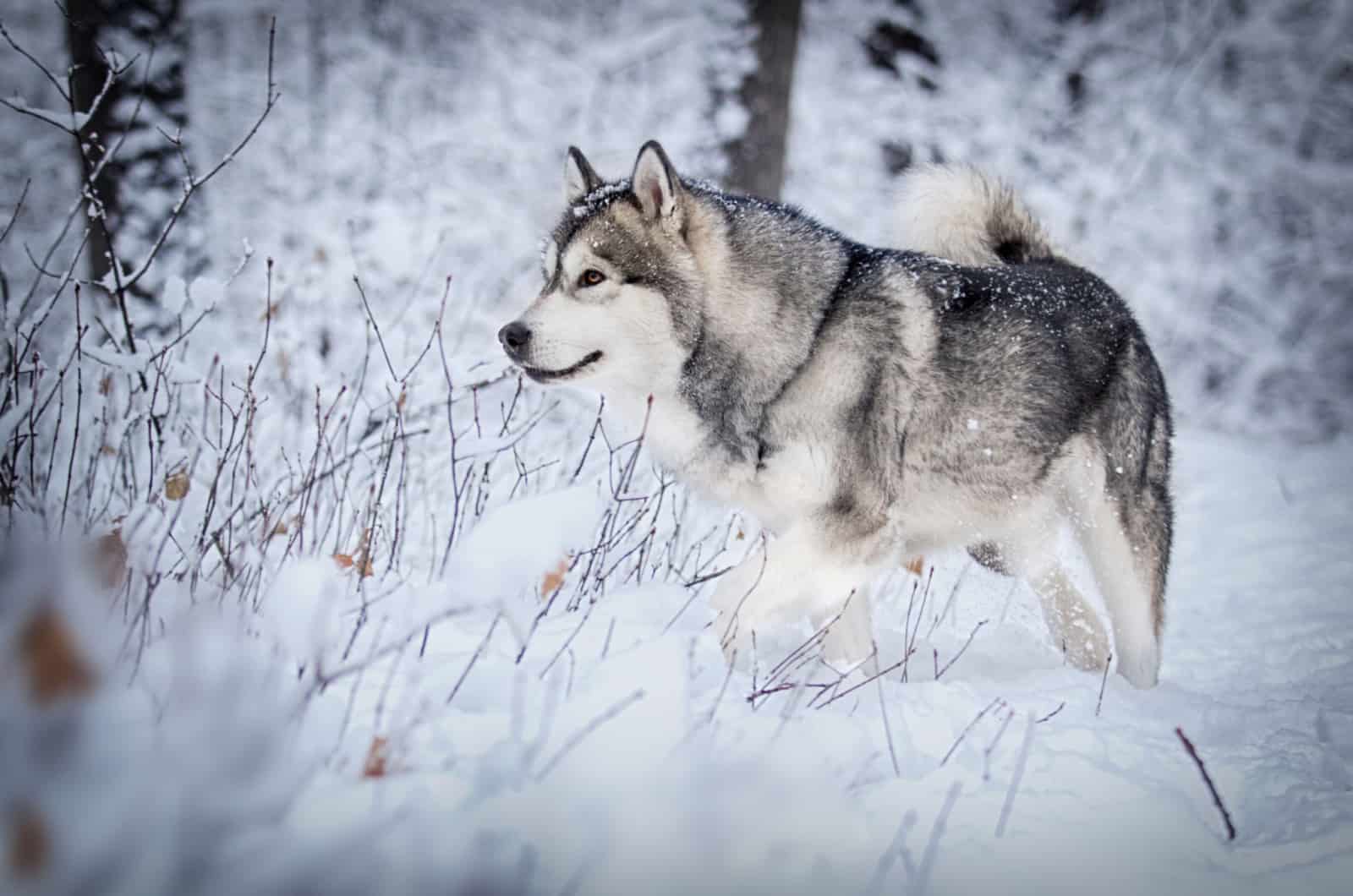
Coming from a coat type that is blue, but kind of looks gray (or, is it the other way around?), we come to the actual gray/white combo.
Perhaps the most usual color pattern in Alaskan Malamutes, this is the look that they are most associated with in people’s minds, as well as in pop culture. You could say that these are textbook examples of an Alaskan Malamute.
It perfectly compliments their distinguished and proud look, and it is one of the main reasons why Malamutes are always one of the breeds that often get confused with actual wolves.
The gray in their coat comes in many different shades, but an important distinction is that it’s always lighter than black, and darker and less shiny than silver. The guard coat is clearly banded, with a dark stripe stretching across the dog’s back.
They have a very well-defined white face, which is often described as the prime example of a white mask in Alaskan Malamutes. Throughout the development from puppyhood into adult life, there are very few changes in their coat colors, so they are usually fairly easy to identify even right after birth.
Red And White
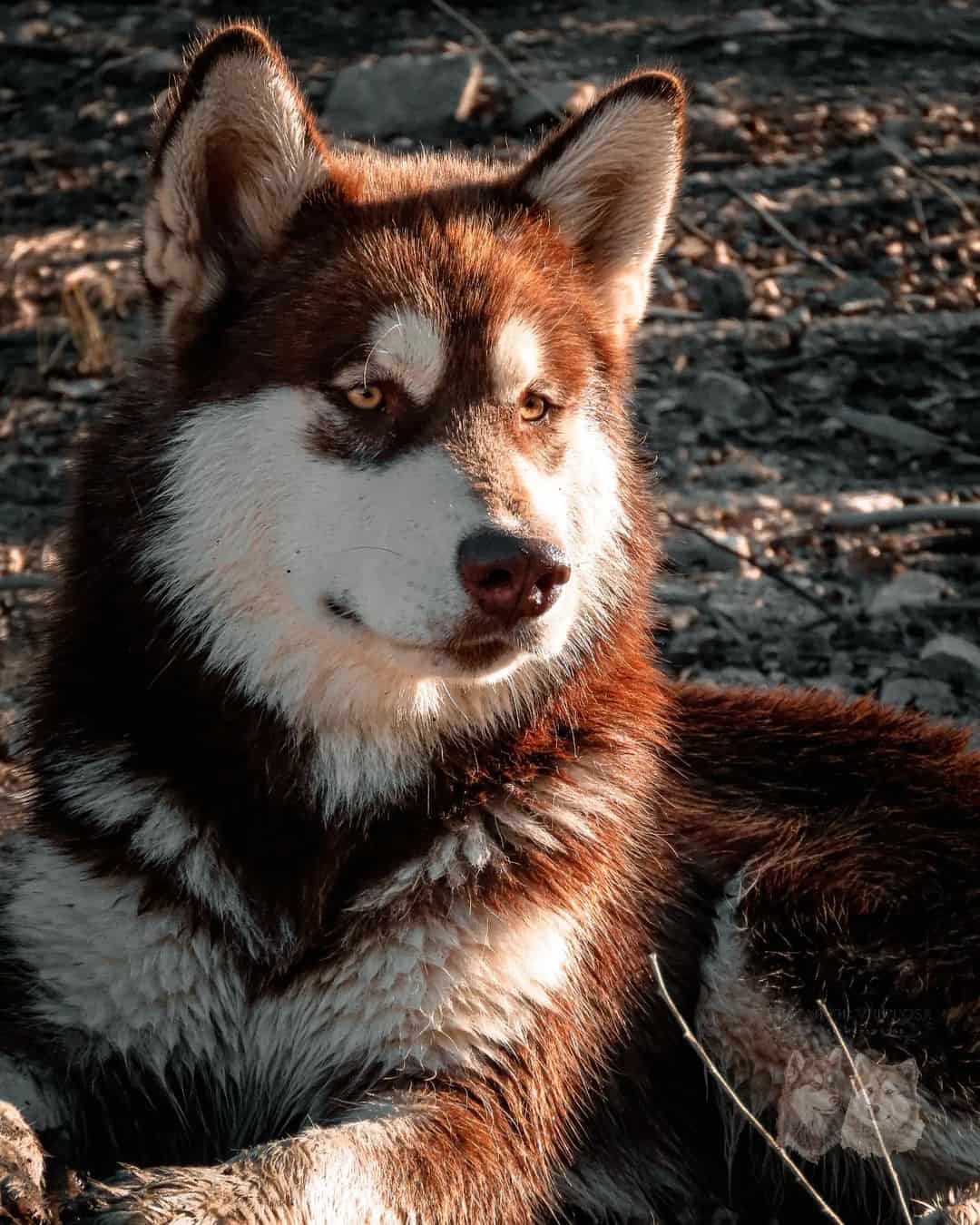
Photo from: @tovardeventosa
This combination is highly unusual because the red shades really make these Malamutes stand out from the rest.
Their guard hair is noticeably different from all of the other Alaskan Malamute variants, and the word “red” is used to cover all sorts of shades, from actual red to light brown, from dark orange to mahogany, and everything in between.
Not only that, but their face is also different from others. The part of face markings that are pigmented, like the nose, lips, or eye rims, are not dark gray or black like others. Instead, those areas are either brown or red.
Their undercoat is most commonly cream-colored, but it can also be white or even light red. An important factor in these dogs being labeled as red and white is that they don’t have any black markings on their body at all.
As you might have guessed, this version of the Alaskan Malamute is among the rare ones.
Sable And White
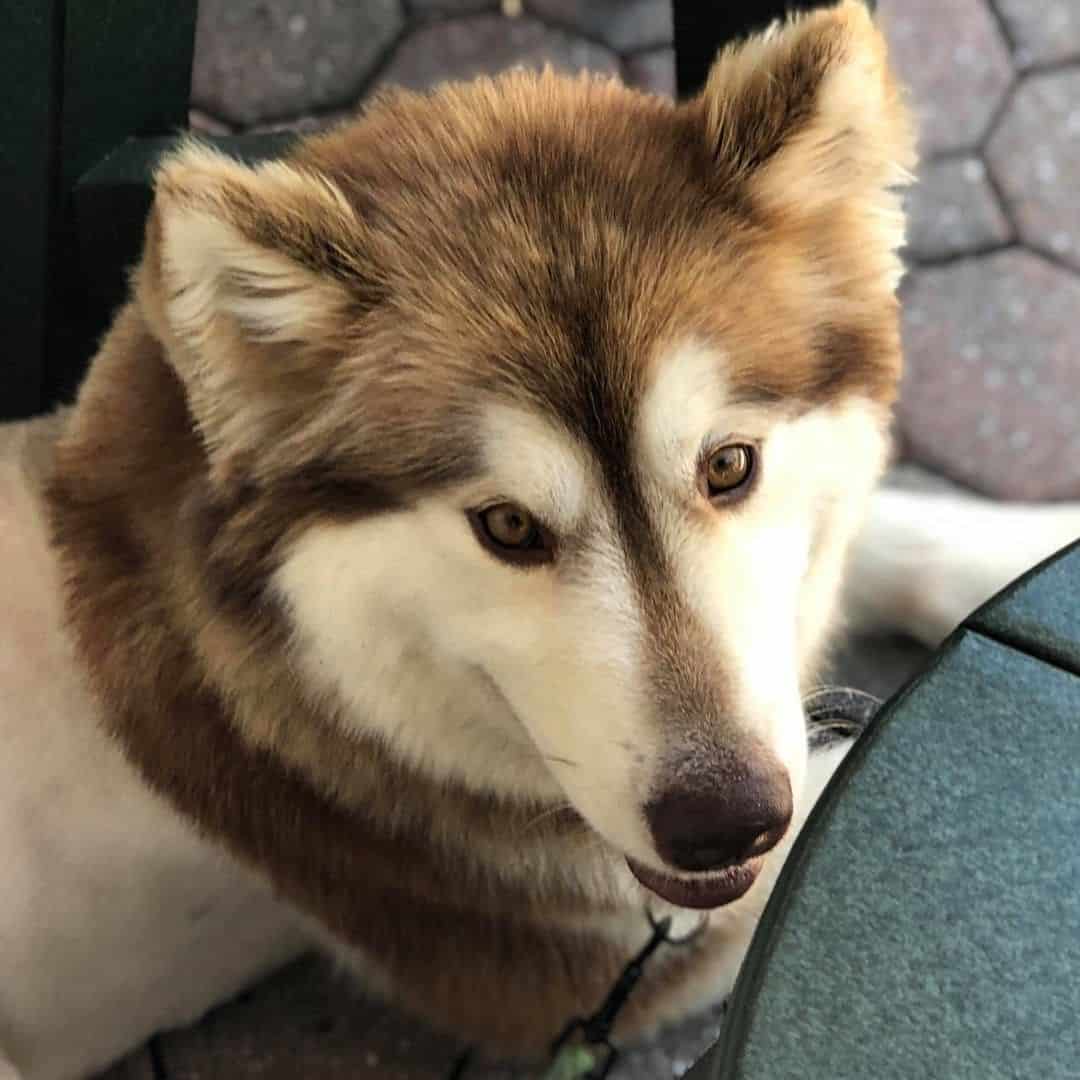
Photo from: @maggiemalamute
Sable is a term that describes Malamutes whose white part of the coat has distinct reddish coloration throughout.
The sable coloration usually stretches out across their entire body, including the undercoat, and it’s sometimes visible even on their face and legs.
Technically speaking, this can appear in any of the nine color combinations, but it’s a general consensus to use the term “sable and white” only when talking about gray and white Malamutes with the sable coloration.
However, owners of such dogs will sometimes use terms like “red sable”, “blue sable”, etc. to describe their sable dog that isn’t of the black and white variant. Even though they have a very interesting color combination, sable Malamutes are fairly common among the breed.
Seal And White
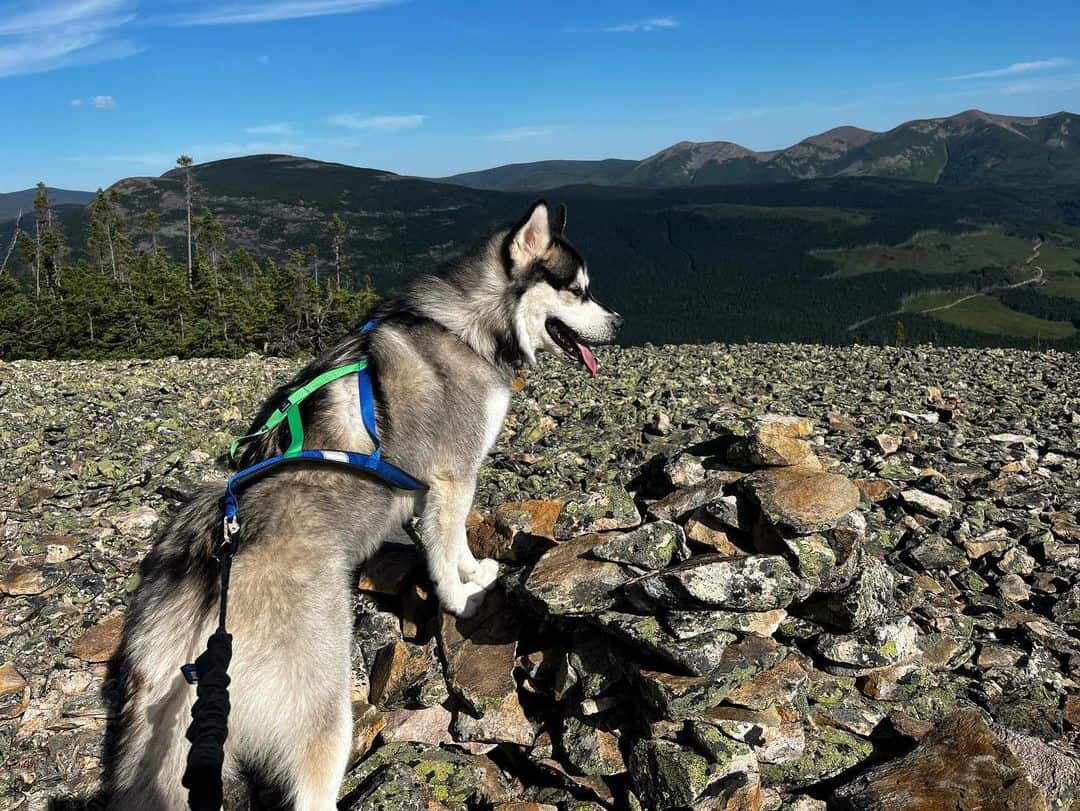
Photo from: @maddox_winterwolf
You could describe the seal and white Alaskan Malamute as being closely related to the black and white combo.
Indeed, they usually have the same shades and patterns displayed on their guard hair, but what sets them apart is their undercoat. As we’ve explained, black and white Alaskan Malamutes have a black or dark gray undercoat, which sort of underpins the dark tones of their outside coat.
On the other hand, seal and white Malamutes tend to have a white, cream, or light gray undercoat, which can sometimes show through their outer coat and make it look like the black patches are not as thick, or spread around a bit more.
From a distance, it can be tough to tell them apart, so you always need to check their undercoat in order to categorize them correctly. However, even that can be a challenge when they’ve just been born as the undercoat has not yet fully developed.
Silver And White
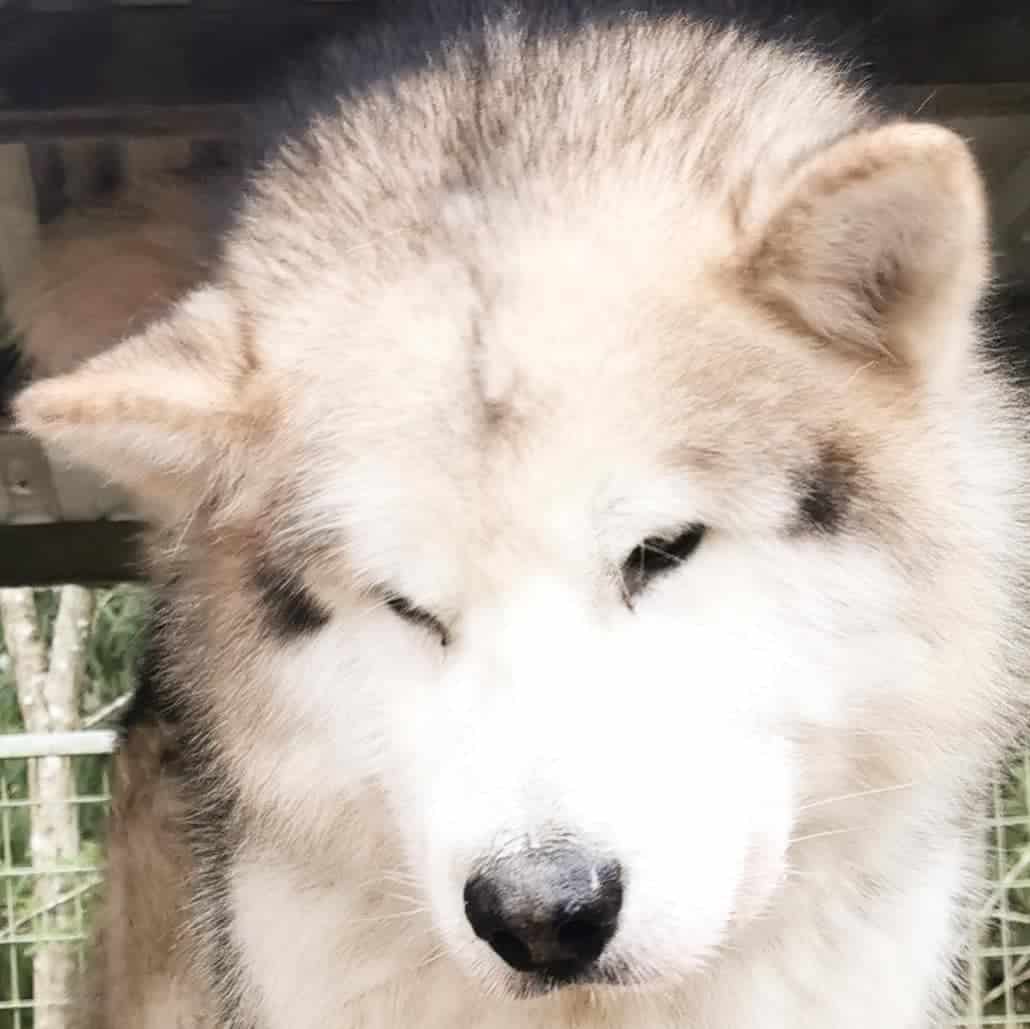
Photo from: @cahppes
Finally, we’ve come to the silver and white Alaskan Malamutes. This version can be extremely difficult to notice as they can be very similar to solid-white Malamutes at birth, and look a lot like the gray and white ones in their adulthood.
During their puppyhood, they are almost fully white, with only some minor silver banding in the colored areas of the coat. As they grow up, they start to get a little bit more of that trademark gray in their hair, which is why it becomes easy to confuse them with the gray and white Malamutes.
The way to tell them apart is by the fact that the gray tipping in their outer coat is not as dark or as thick as in the gray and white version. This is why they’re called silver as this particular combination has a particular shine that doesn’t really exist with dark gray colors.
Other Color Markings In Alaskan Malamutes
Apart from general coat types and colors, there are certain terms related to Alaskan Malamutes and their color that you should know about.
These are usually shorthand terms used to describe a particular area of the dog’s body or a common occurrence in their coat color that can be a factor in differentiating between two different types of Malamute.
We are going to explain what some of them mean, so that you can fully understand them.
Bar
The “bar” is a term that refers to the darker area that stretches from the top of the cap all the way down to the nose. It is either dark gray or black in most cases, but in others, it can just be slightly darker than the surrounding area.
Blaze
“Blaze” is a very specific type of white marking that starts from the back part of the cap, goes across it, and ends at the forehead.
There isn’t really a common shape or size of this marking that appears in all Alaskan Malamutes, but its position and color are what make it stand out.
Cap
Given how we’ve already mentioned the word “cap” several times, it’s probably time to explain what it actually means. Spoiler alert: it’s not a baseball cap on an Alaskan Malamute. Although, that sounds really cool.
The cap is actually the shaded part that covers the top of the head and the outside of the ears. So, it’s basically the place where the dog would wear a cap. Makes sense!
Closed And Open Face
The face of an Alaskan Malamute can be described as either open or closed.
If it’s completely white with no markings or shading, then we call it an open face. Accordingly, when there is too much dark shading, so much so that the face is indistinguishable from the cap, then we refer to it as a closed face.
Eye Shadow
This one might be a bit self-explanatory, but we will elaborate, nonetheless. Eye shadow refers to the dark shades or rings either around or underneath a dog’s eyes.
Typically, these shades are darker when the puppy is born, and then they slowly fade as it grows up. It can go from gothic-style charcoal black to a very mild gray over the course of an Alaskan Malamute’s lifetime.
Full Collar
Most Alaskan Malamutes will generally have a wide white band of fur stretching all the way around their neck, contrasting the surrounding dark color.
Since that is where the collar usually goes, this occurrence is known as the full collar.
Goggles
Goggles are not to be confused with eye shadow. Eye shadow is the dark area directly around the Malamute’s eyes, and goggles are the wider area that covers both of the eyes and the space between them.
It can sometimes have a darker hue than the rest of the face, in which case it literally looks like the pooch is wearing a pair of goggles. Typically, the whole area consisting of the bar, the cap, and the goggles is called the full mask.
Star
When an Alaskan Malamute has a generally darker cap, but has a noticeable white marking on its forehead, that is sometimes referred to as the star.
Every dog is a star in our opinion, but these boys and girls can literally have a white star on their forehead.
FAQs About Alaskan Malamute Colors
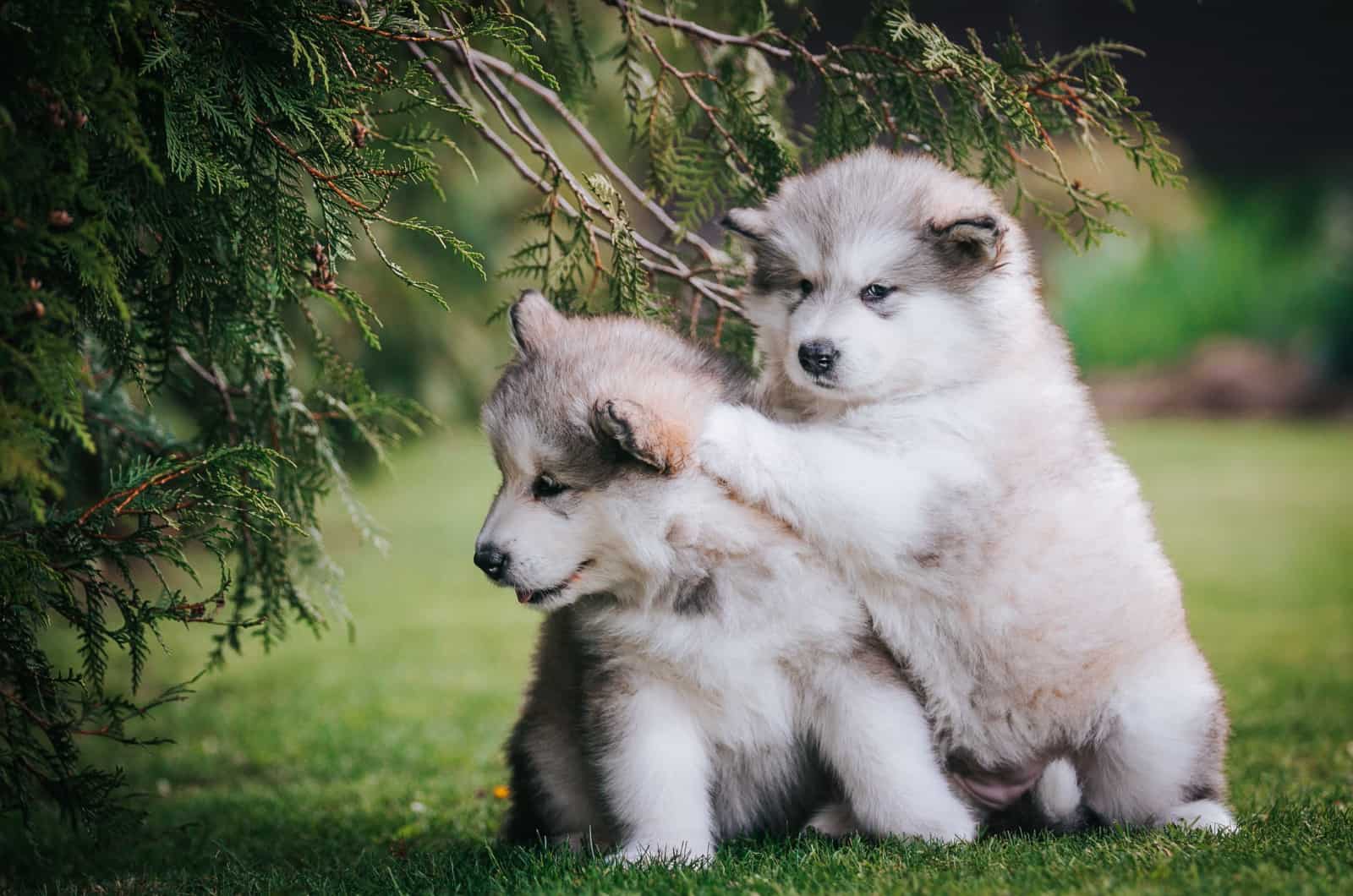
Alaskan Malamutes are such an interesting dog breed, not in the least because they have been around for so long. Even though they originated in the coldest inhabited parts of the Earth, they are now much more common in other, warmer areas as well.
Their appearance often fascinates people, and therefore, they often ask a lot of questions about these pooches. When it comes to their coat types, people usually want to know what the most common variants are, what the rarest ones are, etc.
If you are thinking about going to a breeder and adopting an Alaskan Malamute puppy for yourself, you will probably have a lot of questions yourself.
While we’ve discussed many of the important talking points of Alaskan Malamute coat colors already in the article, we wanted to go ahead and directly answer some of these frequently asked questions that people have.
So, let’s get into them!
What Are The Most Common Alaskan Malamute Colors?
By far, the most widespread coat color in Alaskan Malamutes is the gray and white combination. It’s the look that they are most associated with, and that’s usually what people think of as the breed standard.
After that, the second-most common color is probably the classic black and white tuxedo style. While the lines between the two can be blurry, especially since some darker shades of gray come pretty close to black, the clearest distinction is often found in the undercoat.
Black and white Alaskan Malamutes usually have a charcoal-black undercoat, while gray and white ones have a gray undercoat.
Can Malamutes Be Black?
There are no Alaskan Malamutes that are solid black in color; however, the black and white combo is very common.
When you think about it, there are many dog breeds that can be fully black. Some of them are iconic, and others sometimes have an unfairly bad reputation. But, Alaskan Malamutes are not one of those breeds as a completely black coat is not an option for them.
Their undercoat can occasionally be fully black or dark gray, but the guard hair on the outer coat is almost always multicolored. The only exceptions are the fully white Alaskan Malamutes, but even they are very rare.
Are There Any Solid-Color Alaskan Malamutes?
The only solid-color Alaskan Malamute that exists is the white one.
They are extremely rare, and their coat varies from pearly white to a soft cream color. Most importantly, there can be no dark spots or markings anywhere on their body.
Some Alaskan Malamute puppies can look fully white at birth, but grow some silver or gray bands in their coat as they approach adulthood.
These are not considered to be solid-white Alaskan Malamutes, even though they can be mistaken for them at a very young age.
Are There All-White Malamutes?
Even though this question has basically been answered in the previous section, we’ll use this space to talk a bit more about the standards that need to be fulfilled in order to correctly label an Alaskan Malamute as all-white.
The standards are pretty rigorous: they have to be completely solid white (or cream) across their entire body throughout their puppyhood and their adult life.
No markings of any other color is allowed anywhere on their outer coat or even on their undercoat. In fact, the undercoat has to be strictly white or in a very light shade of cream. Their face is also completely white, highlighted by their black snout and dark brown or hazel-colored eyes.
The only markings permitted are very subtle, practically indistinguishable biscuit-colored tints on their ears.
Is There An Agouti Alaskan Malamute?
There are no Alaskan Malamutes that are fully agouti. There are those with an agouti and white combination, but they are considered to be one of the rare coat types.
Generally speaking, “agouti” is a term that signifies that each hair in a dog’s fur has two or more different bands of pigmentation.
In visual terms, that usually results in a coat that is brownish, yellow, or gray. It is sometimes also referred to as muddy-colored when it comes to Alaskan Malamutes in particular.
What Color Are Alaskan Malamutes That Are Born With A White Coat?
Alaskan Malamute puppies aren’t always born with the color that they will have in their adulthood.
White puppies can end up remaining white throughout their lifespan, but they can also start developing other pigmentations during their development. Most often, they will end up having silver/white or gray/white coat colors once they’ve fully matured.
Furthermore, knowing how strict the standards are for solid-white Alaskan Malamutes, even the smallest markings of gray or silver will end up with them being categorized as bi-colored dogs.
What Is The Rarest Alaskan Malamute Color?
The full-white coat is the rarest among Alaskan Malamutes. That is because all-white dogs have a very specific set of genetic factors, and also because the standards for classifying an Alaskan Malamute as being white are fairly strict.
Beyond the fully-white Mals, some other coat color combinations that are considered rare are agouti and white, silver and white, and to an extent, red and white.
The Final Word
Alaskan Malamutes are one of the oldest known dog breeds, and they have been a favorite among the people inhabiting the northern parts of the planet for a long time.
These Spitz-type large dogs are loved for their tirelessness, vigilance, and obedience, but also for their fairly gentle demeanor, devotion, and friendliness.
When it comes to Alaskan Malamute colors, people generally picture them as being gray and white, or black and white, similar to other northern dog breeds, such as the Siberian Husky.
However, there is much more to it than that as Alaskan Malamutes have been known to have up to nine different coat colors. We hope that this article has shed some light on all of those possibilities and brought you closer to these iconic dogs.
If you were thinking about adopting an Alaskan Malamute, now you know that there are different options that you can go for. However, we would like to point out that looks shouldn’t be the main reason why you pick a certain dog. When you visit a breeder, make sure to learn as much as you can about their puppies before bringing one home.
Additionally, if you want to learn more about the many Malamute mixes, check out our article about the 30 most adorable Alaskan Malamute mixed breeds.
Read Next:
• Malamute Vs Husky: The Battle For An Ice Throne
• Revealing The Alaskan Malamute Feeding Chart Mystery
• Malamute Vs Husky Vs Samoyed – Which One Is For You?
